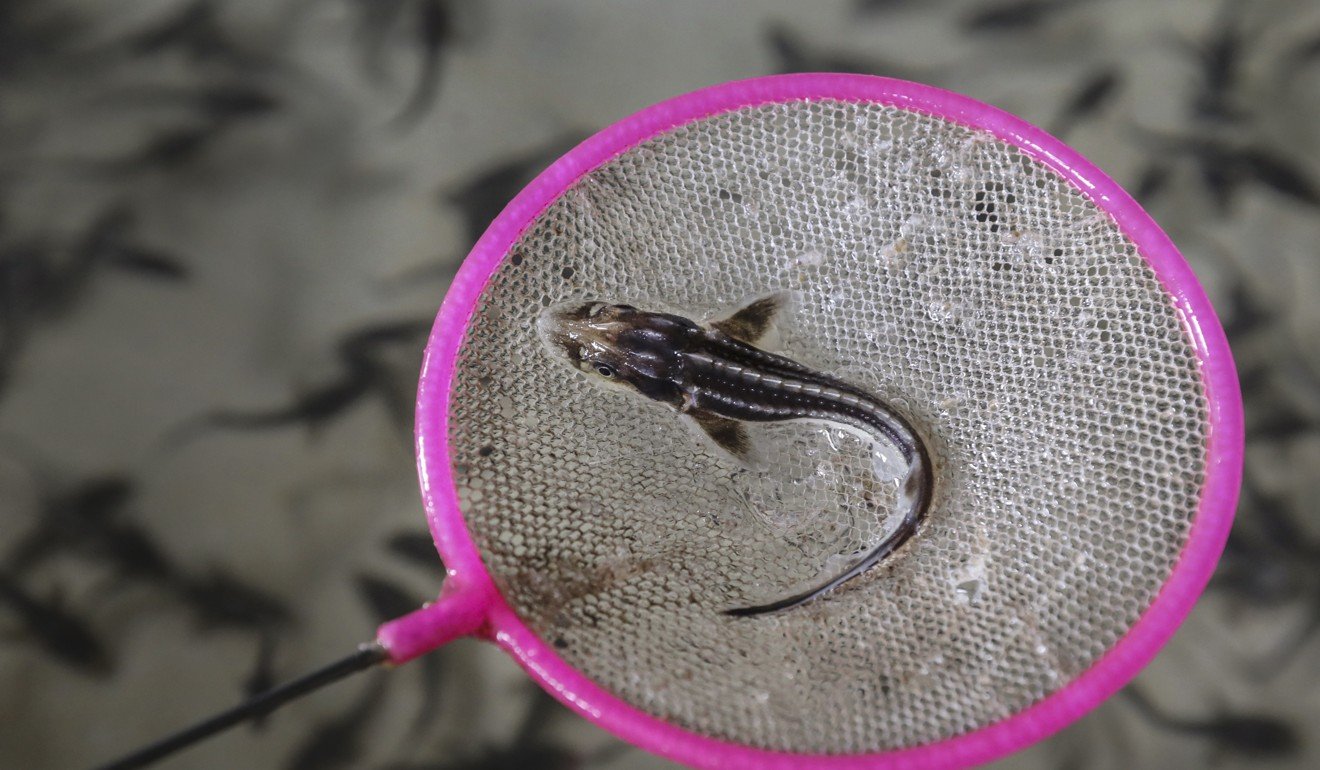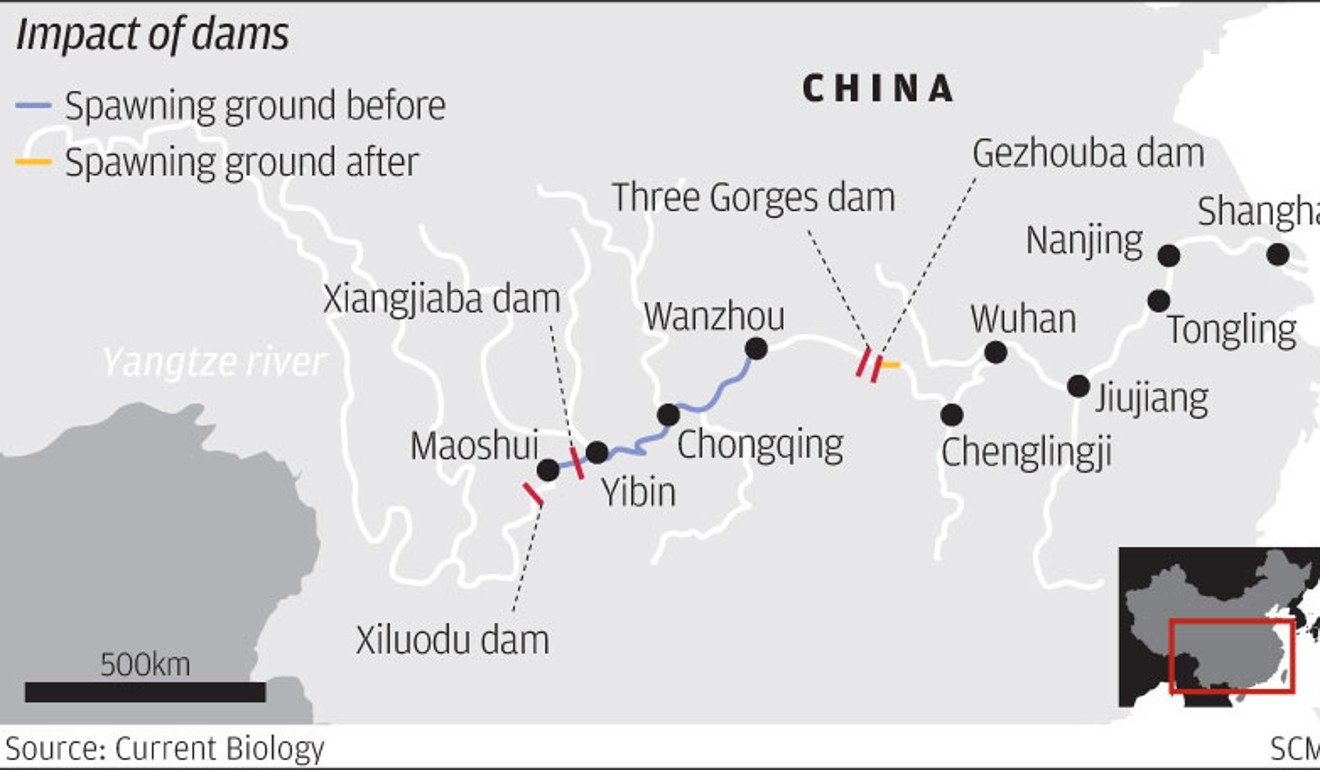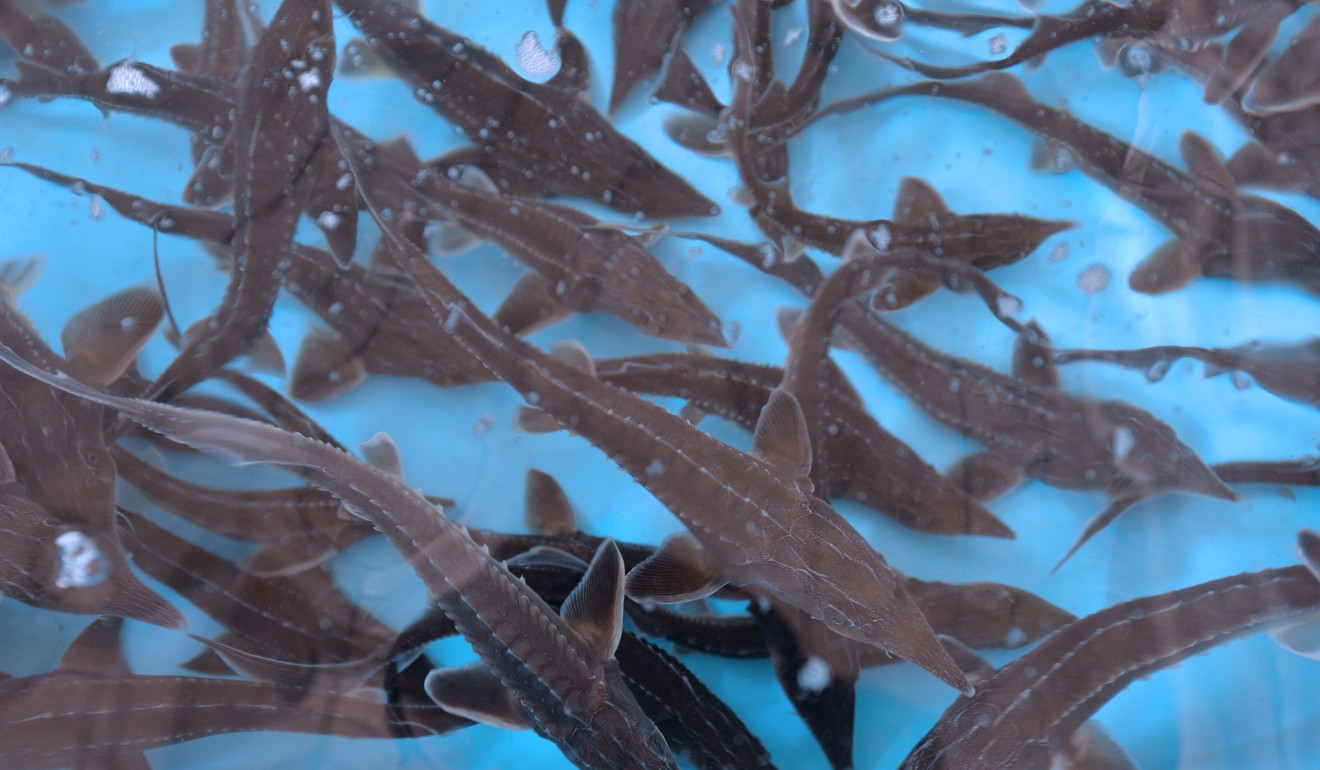
Yangtze dams may spell end to Chinese sturgeon in a decade
- The endangered species of giant fish faces its demise because of the blocking and shortening of migration routes, and the warming of water
The dams on China’s Yangtze River could lead to the extinction of wild Chinese sturgeons within the next decade, after causing a decline of the critically endangered fish species since the 1980s, a recent study has concluded.
The fish have found it difficult to spawn since their migration routes were blocked and shortened, while the water temperature has become too high for breeding, the study said. It was published in the science journal Current Biology last week.

Chinese sturgeons, which have existed for about 140 million years, are among the first class of protected animals in China. Dubbed a “living fossil”, the slow-growing fish usually swims from the sea to the upper reaches of the Yangtze to lay eggs.
Chinese sturgeon on the brink of extinction
Adult Chinese sturgeons – more than 10 years old – are giant fish, weighing 200kg to 450kg with a length of up to five metres. Over the course of their lifetimes, which last at least 35 years, according to the study, they will swim back to the Yangtze to breed about three or four times.
They used to swim around 3,000km from Shanghai – the river’s mouth – to remote Maoshui and Yibin in southwestern China. Now the dams have cut the route to just 1,600km to Yichang in Central China.
“Dams are considered a serious threat to migratory fish on a global scale,” said Huang Zhenli, lead author of the study and a scientist with the China Institute of Water Resources and Hydropower Research in Beijing. “We found that the loss of effective breeding and environmental capacity are two crucial factors for Chinese sturgeons in the Yangtze River.”
“Without viable remedial measures, the wild Chinese sturgeon will become extinct – as soon as in the next decade,” Huang said.

The population of adult Chinese sturgeons shrank to less than a tenth of what it was four decades ago, the study said. They are estimated to have declined to about 2,500 in 2015 from more than 32,000 before 1981.
Before the damming of the Yangtze River in 1981, the giant fish swam freely into the river’s mouth each summer, continuing upriver while fasting along the way. They bred in the upper spawning ground the following autumn before returning quickly back to the sea.
“Since 1981, the Gezhouba Dam has reduced the migration distance by 1,175km, resulting in the delay of development of reproductive glands by 37 days,” said Huang. “The shorter route brought the species’ effective breeding population size to about a quarter of the original.”

Additionally, the study found, subsequent dams built on the Yangzte – especially the Three Gorges and Xiluodu – have further reduced the species’ effective breeding quantity to no more than 4.5 per cent of what it used to be, by raising the water temperature too high to breed, the study said.
China began to build dams on Yangtze – the longest river in Asia – in 1970 to produce electricity while reducing flooding downstream. Over the years roughly 20 dams have been constructed, according to International Rivers, a non-profit organisation dedicated to advocating for open rivers. Three Gorges is the biggest, located about 1,000km downstream of the fish’s spawning grounds in southwestern China.
Endangered Chinese sturgeon faces new threat to survival in Yangtze River
The species was listed as critically endangered by the International Union for Conservation of Nature in 2010 and included in the international protection list CITES (Convention on International Trade in Endangered Species of Wild Fauna and Flora) in 2015.
The sturgeon also faces threats from a paint chemical called triphenyltinthat is widely used in China, a study in 2009 found. The chemical is widely used in paints used in boats, fishing nets and some fungicides. This chemical tends to accumulate in the body of Chinese sturgeons more than other water organisms.

